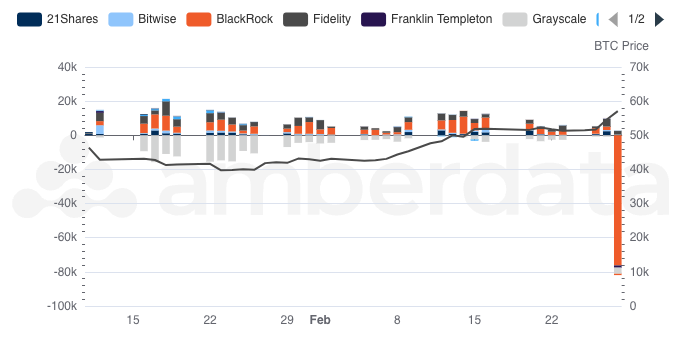
Description
BTC and ETH ETF Flows track the net movement of assets into and out of wallets associated with exchange-traded funds (ETFs). These wallets represent ETF issuer holdings and are monitored to reflect investor sentiment and fund positioning. ETF wallets are not always publicly disclosed by issuers. As a result, wallet attribution is based on tracking and tagging performed by trusted on-chain analysts and researchers. While not 100% definitive, these wallet sets are curated with a high level of confidence.- A net increase in ETF wallet holdings generally reflects bullish market sentiment, indicating a rise in investor demand.
- A net decrease suggests bearish sentiment or profit-taking activity.
Use Case
**Traders: **ETF flow data offers insights into short-term market sentiment and potential price movement. By analyzing net inflows or outflows, traders can better time market entries or exits and respond to changes in institutional investment behavior. **Researchers: **ETF flows serve as a proxy for institutional interest in BTC and ETH. Researchers use this data to study macro-level adoption trends, the integration of crypto into traditional finance, and investor responses to major regulatory or economic events. **Analysts: **Market analysts leverage ETF flow data to assess conviction in Bitcoin and Ethereum as investable assets. These insights inform investment strategy, asset allocation, and risk assessment. ETF flows also help analysts construct narratives around capital rotation, institutional behavior, and market health.Methodology
- Wallet Attribution
A curated set of ETF-associated wallets is compiled using public tagging efforts by on-chain analysts. Sources include wallet lists from contributors such as Hildobby on Dune and entity attribution platforms like Arkham. (Note: wallet addresses are sourced from Dune, but Dune’s aggregated metrics are not used.) - Balance Tracking
Amberdata’s blockchain infrastructure is used to calculate the historical balances of the identified wallets. These balances are tracked over time to compute inflows, outflows, and net position changes in BTC and ETH across ETF issuers. - Asset Flow Calculation
Changes in wallet balances are analyzed on a regular interval (e.g., daily) to produce time series data on net flows, enabling both short-term monitoring and long-term trend analysis.
